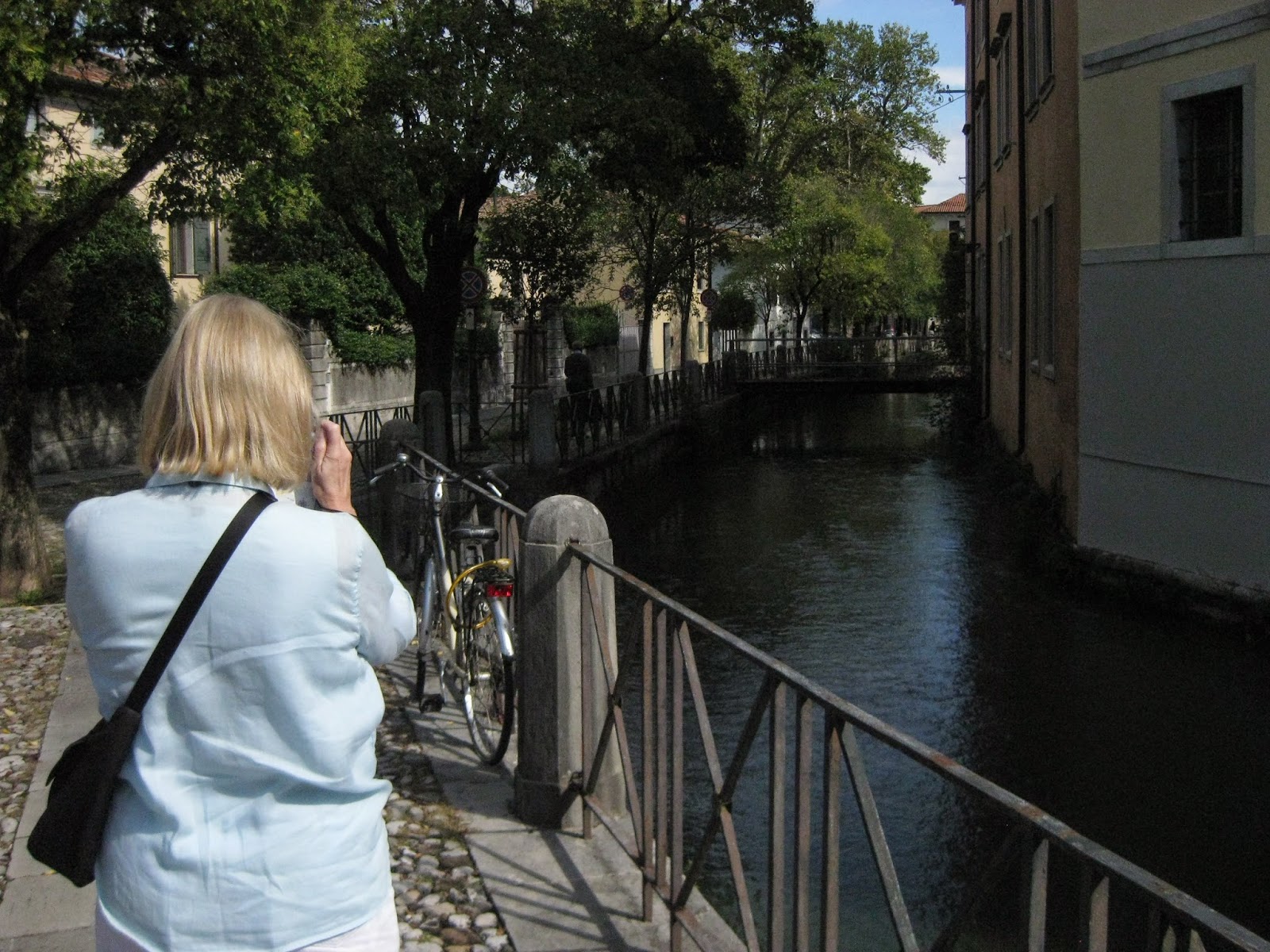Our interests were four-fold: to get to know Udine (about which we had heard so many good things), to explore the famous wine regions in the Friulian hills, to explore the Basilica of Aquileia, and to visit Trieste. Along the way we would sample the very different foods, pastries and wines of the area. And so we arranged our four days on the ground to visit all of these very different sites.
Our first evening, of course, included the requisite introductory aperitivo in a lovely piazza, followed by dinner in a simple but traditional restaurant, Il Vecchio Stallo (the old stall) where we tried many of the local specialties: cjalzons (a type of ravioli), polenta, frico (a type of cheese fritter with onions and sometimes potatoes), cevapcici (a grilled dish of minced meat), etc..
 |
| World-famous Gubano |
Lee had done much research on what we should be trying, and so we were eager to sample Friulian cuisine and especially the local treat called a Gubano made of a twisted pastry dough filled with raisins and nuts. We even carried one back to Florence to share with our friends during morning coffee at the bar in Piazza Santo Spirito!
 |
| Map of old Udine |
Our first full day focused on Udine and so we rented head-sets and began roaming the city with the help of an audio guide. Udine is made up of many small piazzas with charming streets connecting them all within a ring road which used to be the city walls. Legend has it that Attila the Hun selected Udine as his base when besieging the religious center of Aquileia and constructed a high round hill in the center of the city for his castle and base.
Udine has a small but excellent modern art museum, and so we punctuated our walking tour with a visit to the gallery which contains not only local artists (totally unknown to us) but also major works by De Chirico, De Pisis, and Guttuso.
One of the loveliest features of Udine is the the small canal system which weaves through and around the city. The following photos show some of the prettiest areas of the town and several of the architectural styles ranging from Venetian (reflecting the time the area was under the control of Venice) to Liberty (art deco in Italian).
 |
| Art deco design (called the liberty style in Italy) |
 |
| Note the Venetian style |
 |
| More in the Venetian style |
Dinner that night was at Alla Tavernetta, a restaurant also featuring local cuisine, where we were able to sample even more Friulano specialties and wine, and fortify ourselves for day 2 exploring the wine regions in the hills generally lying east of the city, centered around the town of Cormans.








Had I not thought it might be Lee pictured, I would have suspected that the neatly but not overly-dressed gent, seated at table and guarding his meal plate, was a local, distinguished consigliere.
ReplyDelete